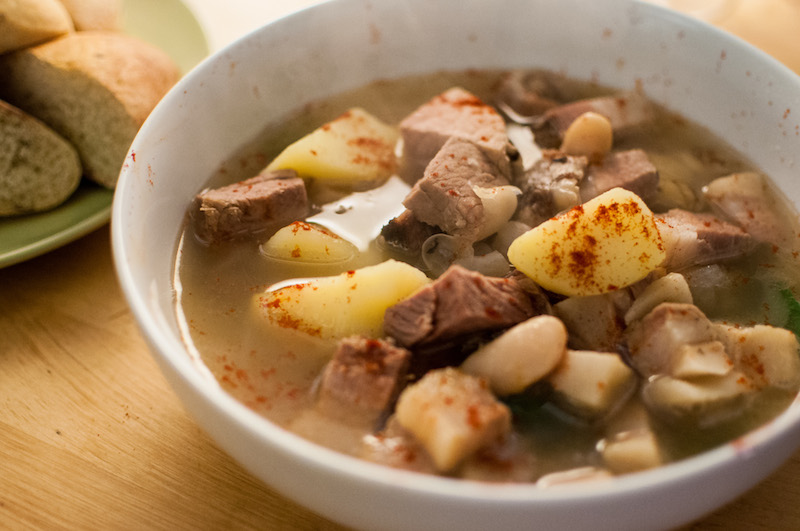Why do hummingbirds hum?
This was the question put forth by a young girl to her mother a couple days ago. I overheard the question while I was eating lunch. It was casual and, most likely, the girl asked it to ask it, nothing but playful chatter.
Because they forgot the words.
This was the mother’s response. It was simple, unexpected, playful, and it contented the curious girl. Then they were gone in a flight to the parking lot, as quickly as a hummingbird at a feeder of nectar.
When I saw these dragon tongue beans at the store, I knew I had to cook with them. Seasonal heirlooms? How could I not? But I also knew I had some crab sitting in the fridge. Then I was reminded of this little Q&A.
The little girl’s innocent, loaded question, which she conjured from her busy imagination, represented something meaningful to me: the quest to discover the world. We have different ways of doing this. One of mine is this food blog. I have said it before, but a sense of pioneerism in food is important to me, as I believe it is in Cascadia, especially in relation to the food we grow ourselves.
When farmers take the chance on these heirlooms, they are doing at least two things: taking a chance on the success of a tradition, and taking the chance on giving up some share of an established produce market in hopes of satisfying some demand for this tradition.
But we oughtn’t consume heirlooms merely because they are different or seasonal or to support our local farmers (but these are fine reasons, indeed). Our motivation ought to be more atavistic than that. Yes, heirlooms are engineered by humans, and, yes, if we go back far enough, we can trace them to a wild ancestor. If anything, heirlooms are celebrations of farmers and gardeners. They also represent the way growers adapt often foreign plants to domestic climates and soil conditions, making the most of the land, and concentrating it all in a single bite. It is no coincidence, after all, that inhabitants of the region that produces most of the world’s cabbage seed also consume so much kale. Tradition is food and food is land. The three are symbiotic.
Does it matter the hum of the hummingbird keeps it still and suspended in the air, or that the same hum keeps a Dutch wax bean hanging in the pink-purple Cascadian sun, or keeps the crabs crawling across the rocky crevices of the Salish Sea?
Unless you forgot the words, you decide.




